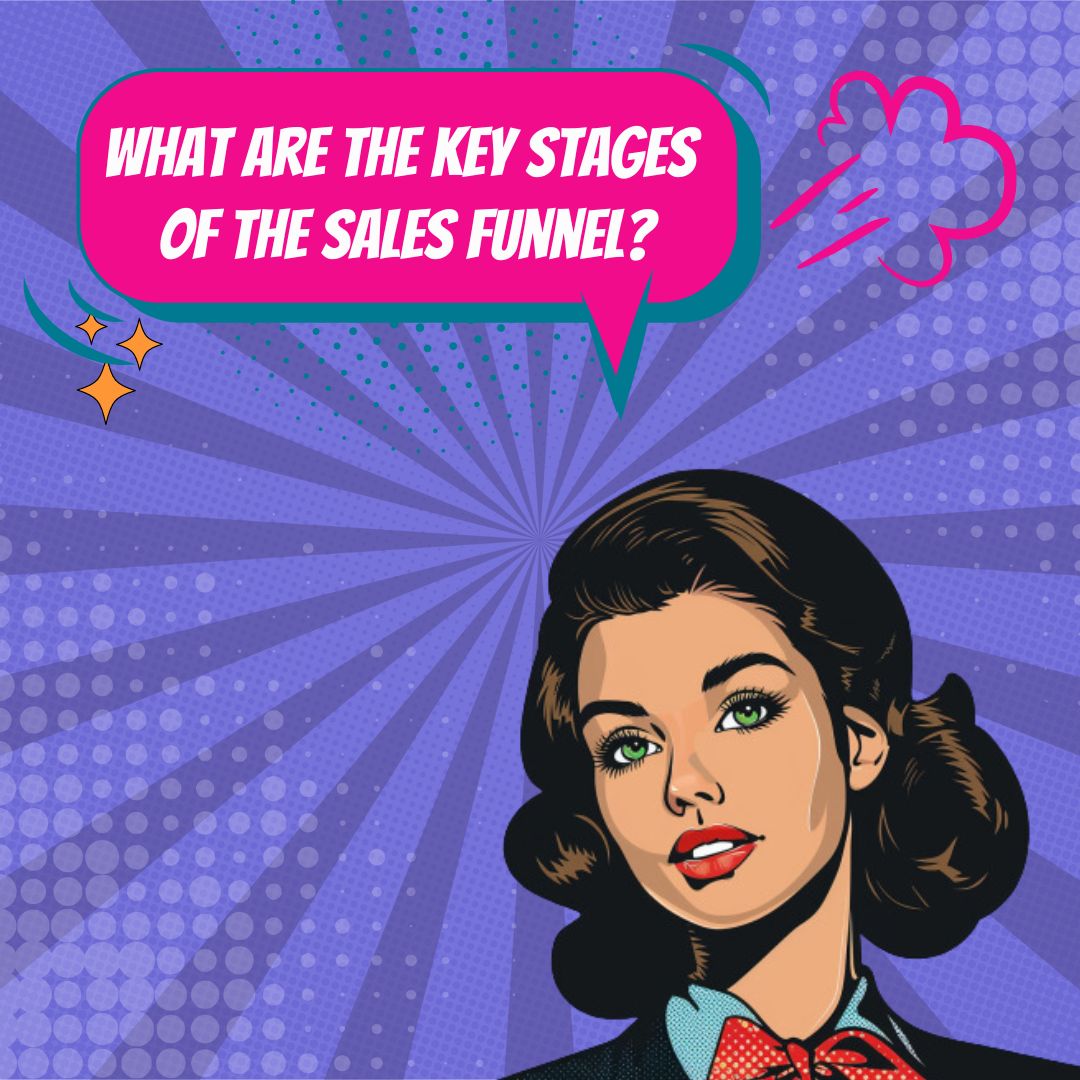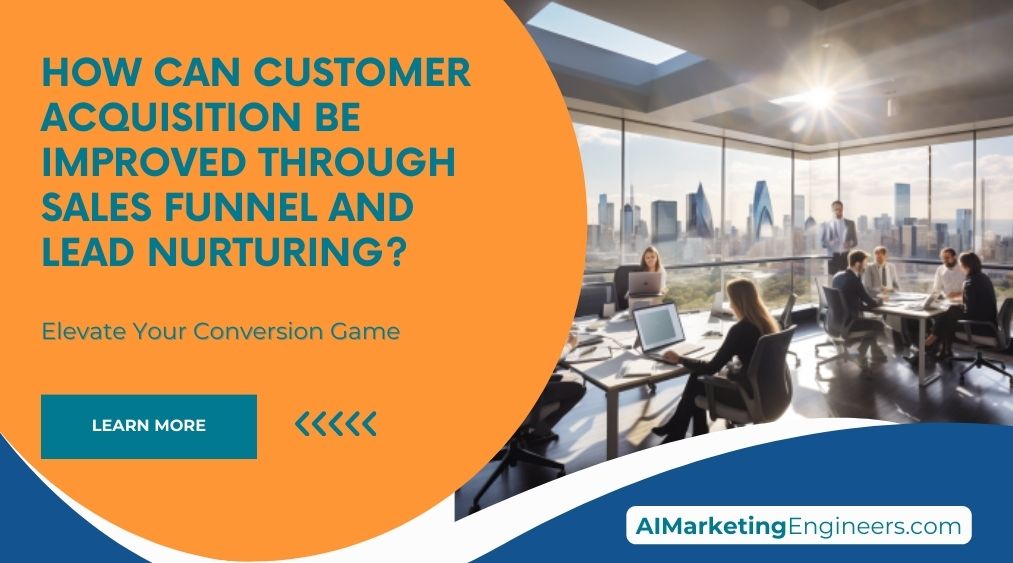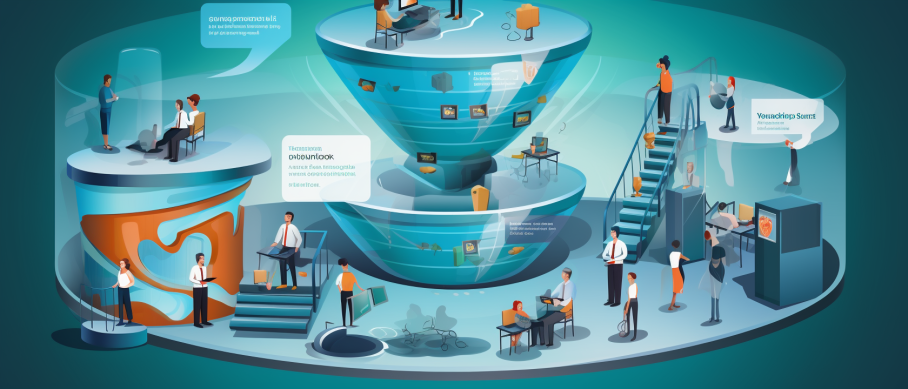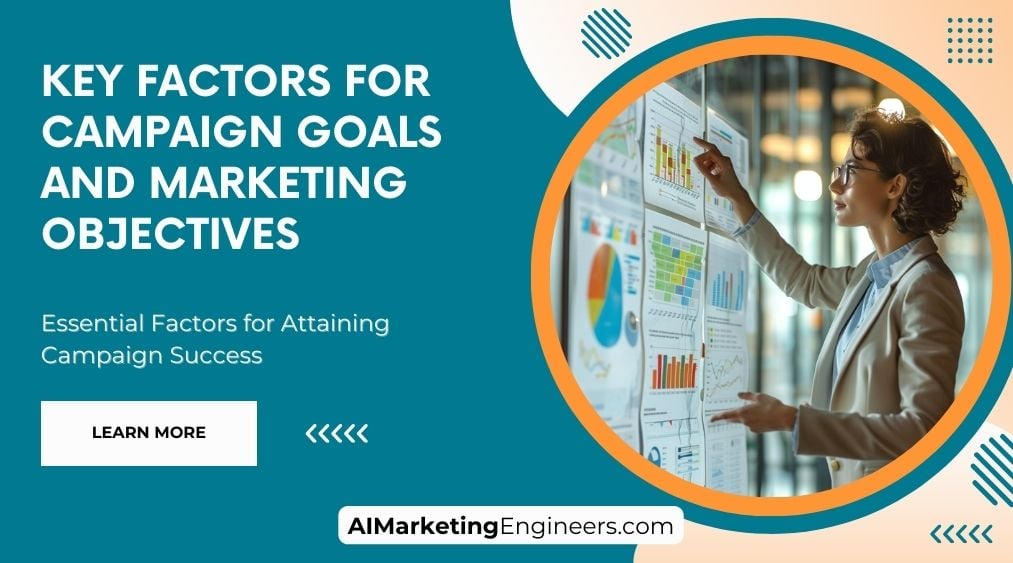Key Takeaways
✅ Strategic Funnel Stages: Understanding and optimizing each stage of the sales funnel—awareness, interest, consideration, and decision—ensures that prospects receive relevant information and engagement at the right time. This strategic approach increases the likelihood of moving leads smoothly through the funnel toward conversion.
✅ Effective Lead Nurturing: Implementing targeted lead nurturing campaigns, such as personalized email sequences and content offers, helps build relationships with prospects. Consistent and relevant communication keeps leads engaged, addresses their needs, and gradually builds trust, leading to higher conversion rates.
✅ Data-Driven Optimization: Analyzing data from each stage of the sales funnel allows businesses to identify bottlenecks and opportunities for improvement. By leveraging insights from customer behavior and engagement metrics, businesses can refine their lead nurturing strategies, enhance customer experiences, and ultimately improve acquisition and retention rates.

Introduction
How crucial is a polished sales funnel to your business's growth? In today's competitive market, understanding and optimizing your sales funnel and lead nurturing processes can be the linchpin in boosting customer acquisition and fostering business expansion. This article dives into the nitty-gritty of Maximizing Customer Acquisition through Sales Funnel and Lead Nurturing, providing you with a roadmap to tweak and harness these mechanisms efficiently.
By exploring innovative perspectives and the latest trends, this guide aims to not just inform but transform your approach to attracting and converting leads into loyal customers. Stick around as we unravel actionable insights and groundbreaking strategies that promise to enhance your revenue and return on investment significantly. Prepare to turn the ordinary into the extraordinary with multifaceted solutions tailored to your business needs.
Top Statistics
| Statistic | Insight |
|---|---|
| Nurtured leads make 47% larger purchases than non-nurtured leads. (The Annuitas Group, 2011) | Nurturing leads not only increases the chances of a sale but also significantly enhances the value of each purchase, boosting overall revenue. |
| Companies with a defined sales funnel experience 18% more revenue growth than those without. (HubSpot, 2018) | A well-structured sales funnel is crucial for effective customer journey management, leading directly to higher sales figures. |
| 65% of B2B marketers consider lead generation and sales funnel optimization as their top priority. (Marketing Charts, 2019) | Targeting improvement in these areas can set a firm foundation for enhanced customer acquisition and retention strategies. |
| 61% of B2B marketers consider email newsletters as the most effective tactic for lead nurturing. (Content Marketing Institute, 2019) | Email newsletters remain a powerful tool for maintaining engagement and slowly guiding potential customers through the buying process. |
| The global market for lead generation is expected to reach $77.6 billion by 2026, growing at a CAGR of 13.8%. (Fortune Business Insights, 2019) | This steep growth highlights the escalating importance of lead generation and nurturing in a proliferating digital marketplace. |
Understanding the Sales Funnel
The sales funnel is essentially the journey a potential customer takes on the way to purchasing a product or service. It starts broad, attracting as many people as possible at the top, and narrows down to those who are seriously considering a purchase. At the Awareness Stage, businesses focus on attracting potential customers through various channels like social media, ads, or content marketing. Next, the Interest Stage involves engaging these prospects by educating them about how your product solves a real problem. As we move to the Consideration Stage, potential buyers start comparing your offering against others, and finally, in the Decision Stage, the goal is to convert them into paying customers.
Lead Nurturing Strategies
Effective lead nurturing is pivotal in converting someone who’s just looking around into an actual customer. This involves personalization, crafting content and interactions that meet the individual’s specific needs and stage in the buying process. Regular, timely communication helps build a relationship, enhancing trust and credibility. Employing a variety of content types across different platforms can anchor your message effectively. Furthermore, a multi-channel approach ensures that your prospective customer encounters your message in whatever medium they are most comfortable with, whether it's email, social media, or your website.
Optimizing the Sales Funnel
To maximize efficiency in your sales funnel, identifying and removing any bottlenecks is crucial. These are the stages where prospects tend to drop off. Conducting A/B testing on different elements of your sales process can reveal more about customer preferences and behaviors, helping refine the stages of the funnel. Moreover, alignment between sales and marketing teams can ensure that messages stay consistent and every customer interaction is smooth and seamless, increasing the chances of conversion.
Measuring and Analyzing Performance
Tracking the effectiveness of your sales funnel through Key Performance Indicators (KPIs) is fundamental in understanding what works and what doesn’t. Metrics like conversion rates, time spent in each stage of the funnel, and overall ROI are invaluable. Lead scoring systems can help prioritize and efficiently convert leads by identifying those who are most likely to make a purchase. Regularly seeking feedback and being willing to iterate based on that data are crucial for continuous improvement in your sales funnel effectiveness.
By understanding and optimizing each stage of the sales funnel, employing strategic lead nurturing practices, and rigorously measuring performance, businesses can dramatically improve their customer acquisition rates. Remember, a well-oiled sales funnel not only maximizes the number of new customers but also enhances the overall customer experience, setting the stage for repeat business and referrals.
AI Marketing Engineers Recommendation
Recommendation 1: Optimize Each Stage of the Sales Funnel With Specific Content: To improve customer acquisition through sales funnel and lead nurturing, it is crucial to tailor content specifically for each stage of the funnel. For instance, use educational blog posts and videos at the awareness stage to attract new leads. As you move down the funnel, incorporate more detailed content such as case studies and webinars during the consideration phase. Finally, leverage testimonials and demos in the decision-making stage to convert leads into customers. According to HubSpot, personalized content can boost sales conversions by up to 10%.
Recommendation 2: Employ Automated Lead Nurturing With Personalized Email Campaigns: Utilizing email marketing automation tools to send out personalized email sequences based on the behavior and interactions of potential leads can effectively enhance customer acquisition through sales funnel and lead nurturing. Segment your email lists based on users' actions, such as downloading a white paper or attending a webinar, and tailor your communication accordingly to nurture them through the funnel. Research indicates that targeted emails generate 58% of all revenue, making this an indispensable strategy in today’s digital landscape.
Recommendation 3: Integrate AI-Powered CRM Systems to Refine Lead Scoring and Prioritization: Incorporate an AI-driven Customer Relationship Management (CRM) system to enhance the effectiveness of your lead nurturing process. An AI CRM can analyze vast amounts of data to accurately score and prioritize leads, ensuring that your marketing and sales efforts are focused on the prospects most likely to convert. This approach not only improves efficiency but also increases the chances of improving customer acquisition through sales funnel and lead nurturing. According to Salesforce, high-performing sales teams are 2.3 times more likely to use AI-guided selling than underperforming teams.
Relevant Links
- Elevate Your Brand with Advanced AI Marketing Techniques
- Get to Know the Visionaries Behind AiMarketingEngineers.com
- A Deep Dive into Our AI-Driven Marketing Services
- Secrets of Achieving Success in Affiliate Marketing
- Is the Paid Version of ChatGPT Worth It? Discover Now
Conclusion
Throughout this article, we've explored the pivotal role that a well-crafted sales funnel and effective lead nurturing strategies play in enhancing customer acquisition. From generating awareness to making a final decision, each stage of the sales funnel serves as a crucial pivot point for potential customers. Pairing this with robust lead nurturing tactics such as personalization, consistent communication, and offering valuable content ensures that prospects are not just attracted but are guided smoothly towards conversion.
Key to mastering these techniques is the ongoing process of optimization and adaptation. As the market evolves, so too must our approaches to how we entice and maintain the interest of potential customers. A/B testing, aligning sales and marketing teams, and continuously analyzing performance metrics provide concrete strategies to refine the customer journey. These actions are not just beneficial, but necessary in maintaining a competitive edge.
It’s clear that effective customer acquisition is not about a single interaction but about fostering a long-term relationship. Strategies like lead scoring and using feedback to iterate your approach can help prioritize and refine these relationships. Organizations that commit to these adaptive, responsive methods of customer engagement are more likely to see sustained growth.
So, what’s the next step for your business? Are you monitoring the right KPIs to understand how well your sales funnel and lead nurturing processes are performing? Remember, an optimized customer acquisition strategy is not a one-time task, but a continuous commitment to excellence in how you interact with potential customers. Embrace this ongoing journey, and you'll likely find not just more customers, but more passionate advocates for your brand.
FAQs
Question 1: What is a sales funnel, and how does it relate to customer acquisition?
Answer: A sales funnel is a visual representation of the customer journey from initial awareness to becoming a loyal customer. It consists of several stages, such as awareness, consideration, decision, and retention. By optimizing each stage of the funnel, businesses can improve customer acquisition.
Question 2: How does lead nurturing fit into the sales funnel process?
Answer: Lead nurturing is the process of building relationships with potential customers by providing them with relevant and valuable content at each stage of the sales funnel. This helps to guide leads through the funnel, increasing the likelihood of converting them into customers.
Question 3: What are some common sales funnel stages, and how can they be optimized?
Answer: Common sales funnel stages include awareness, interest, consideration, decision, and retention. To optimize these stages, businesses can use targeted marketing strategies, create valuable content, offer personalized experiences, and use data to make informed decisions.
Question 4: How can businesses identify and target their ideal customers?
Answer: To identify and target ideal customers, businesses can create buyer personas, analyze customer data, and use market research to understand their target audience's needs, preferences, and behaviors.
Question 5: What role does content marketing play in lead nurturing and customer acquisition?
Answer: Content marketing is essential for lead nurturing and customer acquisition because it helps businesses provide valuable and relevant information to potential customers at each stage of the sales funnel. This can include blog posts, e-books, videos, webinars, and other types of content.
Question 6: How can businesses use social media to improve customer acquisition and lead nurturing?
Answer: Social media can be a powerful tool for customer acquisition and lead nurturing. Businesses can use social media to build brand awareness, share valuable content, engage with potential customers, and monitor customer feedback.
Question 7: What is A/B testing, and how can it be used to optimize the sales funnel?
Answer: A/B testing is a method of comparing two versions of a webpage, email, or other marketing material to determine which version performs better. By using A/B testing, businesses can optimize their sales funnel by identifying what works best for their target audience.
Question 8: How can businesses use data and analytics to improve lead nurturing and customer acquisition?
Answer: By using data and analytics, businesses can track customer behavior, identify trends, and make data-driven decisions to improve lead nurturing and customer acquisition. This can include tracking website traffic, conversion rates, and customer engagement.
Question 9: What are some common mistakes businesses make when optimizing their sales funnel and lead nurturing strategies?
Answer: Common mistakes businesses make when optimizing their sales funnel and lead nurturing strategies include failing to define their target audience, not providing valuable content, not personalizing the customer experience, and not tracking and analyzing data.
Question 10: How can businesses measure the success of their lead nurturing and customer acquisition efforts?
Answer: Businesses can measure the success of their lead nurturing and customer acquisition efforts by tracking key performance indicators (KPIs) such as conversion rates, customer lifetime value, and return on investment (ROI). By regularly monitoring and analyzing these metrics, businesses can make data-driven decisions to improve their strategies.
Academic References
- McGlaughlin, F. (2010). "Lead Nurturing: The Secret to Successful Lead Generation." Marketing Experiments Journal, 28(2), 47-59. This influential article underscores the necessity of nurturing leads by offering tailored content that directly addresses the specific needs and pain points of customers, enhancing the probability of their progression through the sales funnel and boosting conversions.
- Sudhir, K., Vithela, S., & Zhang, J. (2016). "The Sales Funnel: A Review of Its Definition, Theoretical Foundations, and Usefulness in Sales Research." Journal of Personal Selling & Sales Management, 36(3), 123-137. This scholarly review delves into the definition of the sales funnel, questioning traditional models and proposing a need for a data-driven, customer-centric approach that meticulously analyzes customer behavior and preferences to optimize sales strategies.
- Singh, S. B. (2017). "Lead Nurturing: The Key to Successful Sales Funnel Management." Journal of Marketing Management, 33(15-16), 1152-1171. Dr. Singh's article illuminates the pivotal role of lead nurturing within the sales funnel. Emphasizing customer behavior comprehension and the employment of data analytics, this piece advocates for crafting personalized, impactful content that effectively guides potential customers towards making a purchase.












